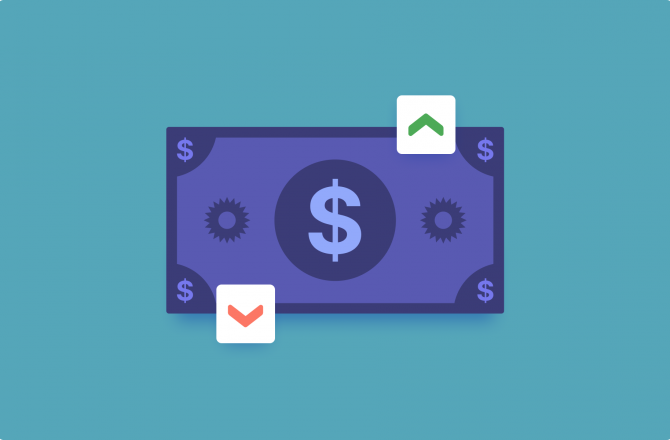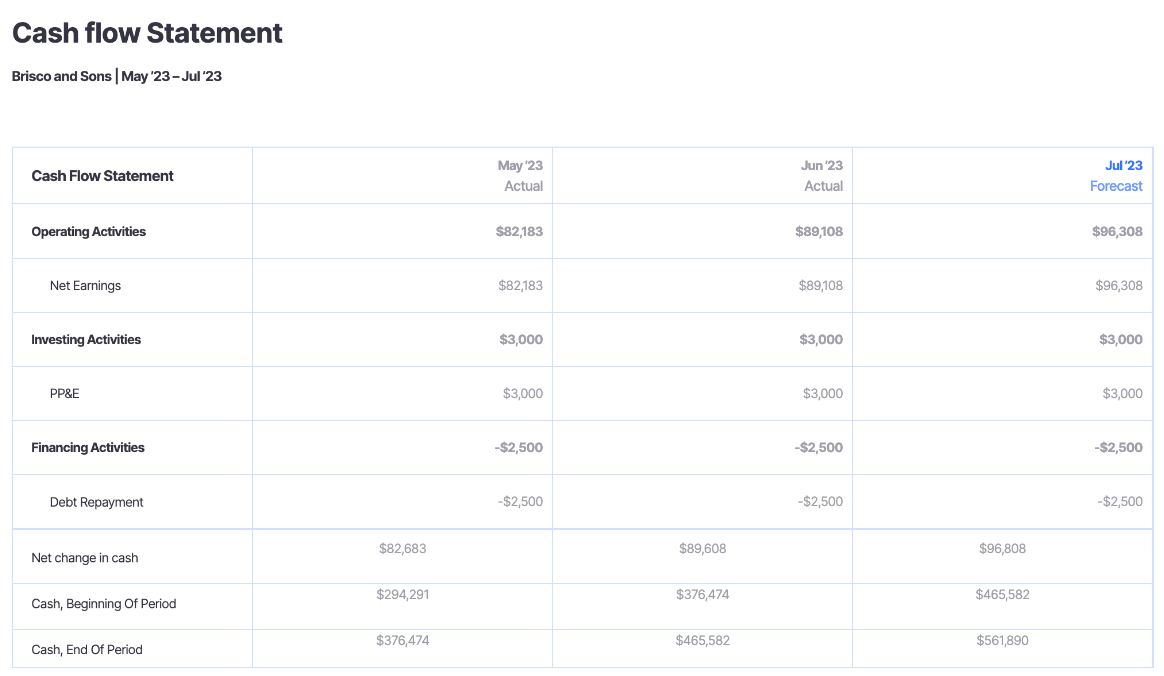11 Tips for Better Small Business Cash Flow Management

As a small business owner, nothing is more important than managing your cash flow — not even revenue or profits.
Many profitable businesses have shuttered not because they didn’t have customers ready and willing to pay for their products or services but because they didn’t have the cash flow to pay employees, stay on top of debt payments, and keep the proverbial lights on.
Knowing how much cash you have coming in and going out gives you an invaluable understanding of the health of your operations and ensures you can pay your bills on time. Yet managing cash flow can be challenging — especially for new business owners who aren’t sure where to begin.
11 Tips to Better Manage Your Small Business Cash Flow
If you need help with your small business cash flow, the following tips can help you do a better job and keep your business on track.
1. Forecast Your Cash Flow
The first step to managing your cash flow is forecasting. This involves predicting the amount of cash that will come in and out of your business in the next month, quarter, or year.
A cash flow forecast gives you a better understanding of your financial situation and helps you plan for future cash shortages.
For example, suppose you have a large debt service payment due next quarter and know that payment will make it tough to pay your bills.
In that case, you might reign in expenses, tap your small business line of credit, or make a concerted effort to collect outstanding receivables to ensure you have the cash flow to keep the business running.
You can prepare your cash flow forecast in a spreadsheet or use financial planning tools like Finmark from BILL. Either way, make sure you account for all cash inflows, such as anticipated sales revenue, receivables collections, and investments, and all cash outflows, such as salaries, rent, inventory purchases, and loan payments. The better your inputs, the more accurate your forecast will be.
2. Stay on Top of Invoicing
One mistake small business owners make is not sending invoices promptly. When you put off sending invoices, your customers can’t pay you, and this can lead to cash shortages.
Depending on your business, industry norms, and credit terms, you might send invoices:
- Weekly
- Bi-weekly
- Monthly
- At certain milestones
- Once you’ve completed the work or delivered the product
Whatever your cadence, consider automating the process with your accounting or invoicing software. This makes invoicing simple and easy, making you less likely to put it off.
3. Manage Receivables
Many otherwise profitable companies run into cash flow troubles because they have too much revenue tied up in receivables instead of their bank accounts. So another way to manage cash flow is to stay on top of receivables.
Managing receivables means enforcing payment terms and following up on late payments. You can also offer incentives for clients to pay their invoices quickly, such as a discount for customers who pay within ten days or charging a fee or interest on late payments.
If you have customers who are chronically late, consider requiring payment up front instead of extending credit. This ensures you get paid for your products and services without chasing them down every month.
Pro tip: If you want to help automate the receivables process, we have a solution for you.
4. Keep a Tight Grip on Business Expenses
It’s tempting to follow the old adage, “You have to spend money to make money,” or spend freely when you start seeing profits come in. But managing your cash flow may require you to rein in your spending.
Before committing to spend money in your business, look at the expense with an investment mindset. Will the expenditure help you boost revenue, reduce other costs, or increase efficiency?
For example, if you’re considering hiring an employee, will that employee help bring in new sales? Or will they take some of the workload off of your shoulders so you can focus on growth?
Some other ways to control spending include:
- Making a budget and sticking to it
- Negotiating with suppliers for better prices and discounts, especially on bulk purchases
- Leverage automation for tasks that would otherwise require hiring an employee
5. Manage Your Inventory Efficiently
If your small business relies on inventory, keeping it in check and avoiding overstocking or understocking is essential. This can help you save money, reduce waste, and improve your cash flow.
Inventory management tools can help you track inventory levels in real time, alert you when supplies are running low, and even automate orders.
6. Negotiate Payment Terms
In the early days of your business, you may take whatever payment terms your clients or suppliers offer. However, as your business grows, negotiating favorable net terms can help improve cash flow and boost your bottom line.
Consider asking for early payment discounts or negotiating terms to 45 or 60 days instead of 15 or 30. When your payment schedule aligns with your business’s needs, it’s easier to maintain a healthy cash flow.
7. Stay on Top of Tax Obligations
Staying on top of your cash flow is difficult when your tax obligations are a mystery. Just when it seems like you have enough cash in your bank account to relax a little, a surprise tax bill comes along and creates a cash crisis.
Keep accurate and up-to-date books, make estimated tax payments, and file your tax returns on time. Monitor any tax obligations, including sales, excise, and payroll tax, to avoid penalties and fines.
Your accountant or tax professional can help you estimate your tax obligations so you can have enough cash on hand to cover your tax payments and avoid interest and penalties.
8. Monitor Your Cash Flow Regularly
Making a cash flow forecast is helpful, but how often do you review and update that forecast and compare it to your actual results?
Forecasts aren’t beneficial if you create them just to sit in a folder for the rest of the year.
Market conditions, costs, and goals can change, and your cash flow situation will change with them. So updating forecasts and monitoring your cash flow in real-time is crucial.
That’s where your statement of cash flows, also known as a cash flow statement, can come in handy.

A statement of cash flows is one of the three core financial statements. It outlines how a business’s cash position has changed over the course of a given period, such as a month, quarter, or year.
Preparing and reviewing your statement of cash flows on a regular basis will help you identify any potential cash flow issues early and take corrective measures before they spiral out of control.
9. Take Advantage of Technology
Managing cash flow is difficult and time-consuming when your budgeting, accounting, and financial reporting lives in spreadsheets that need to be updated manually.
In this technological era, there are plenty of tools you can use to stay on top of your small business cash flow. For example, you can use accounting software to better manage your budget, track your expenses, and prepare financial reports.
Additionally, Finmark can integrate with your accounting software, providing customizable reports and dashboards that provide a real-time view of your sales, profit, cash position, and other vital financial metrics.
10. Establish a Cash Reserve
Establish a cash reserve to prepare for unexpected costs or disruptions to your business.
The amount of money you should set aside will depend on your industry and financial obligations. Many business owners start with at least three to six months of operating expenses as a reserve.
If that seems unattainable at the moment, don’t get discouraged. Start where you are and set a goal to have one month of expenses in your business savings account. As your business’s financial health improves, you can set aside more cash and build reserves.
A cash reserve — even a modest one — can help you weather financial challenges and take advantage of new business opportunities without negatively impacting your cash flow.
11. Don’t Be Afraid to Seek Help
Managing cash flow can be overwhelming, and it’s okay to ask for help. Consider working with an accountant or bookkeeper who can help you with budgeting, forecasting, and cash flow management.
If you need more working capital to cover payroll, accounts payable, or other unexpected expenses, consider applying for bank loans or a line of credit. These options are available to help small business owners manage their cash flow and grow their company’s financial health.
Ready to Take Your Cash Flow Management to the Next Level?
Maintaining positive cash flow is critical to the success of any small business. By following these tips, you can stay on top of your finances, plan for the future, and help ensure your business stays afloat.
With Finmark, you can easily monitor cash flow and forecast your future cash flow position. Our intuitive financial planning tool helps you see where you stand today and plan for what might happen tomorrow.
Start your 30-day free trial today!
Contributor
This content is presented “as is,” and is not intended to provide tax, legal or financial advice. Please consult your advisor with any questions.
